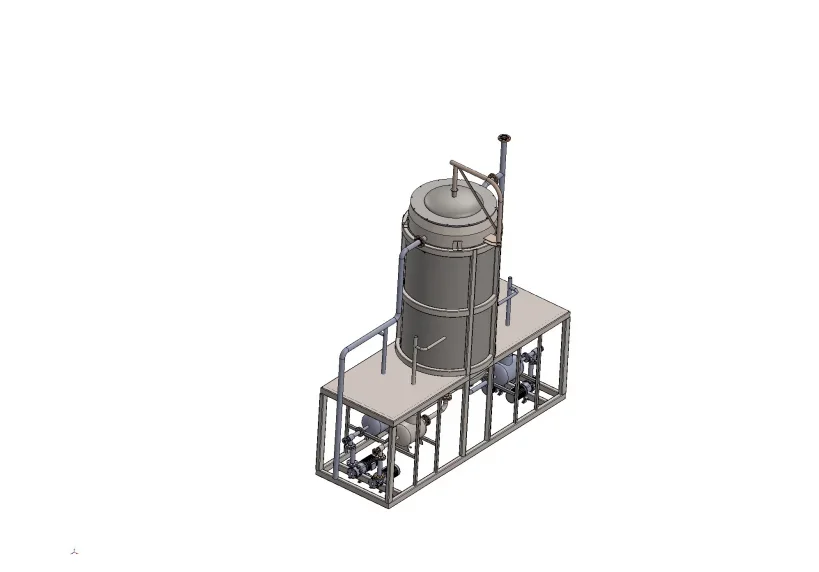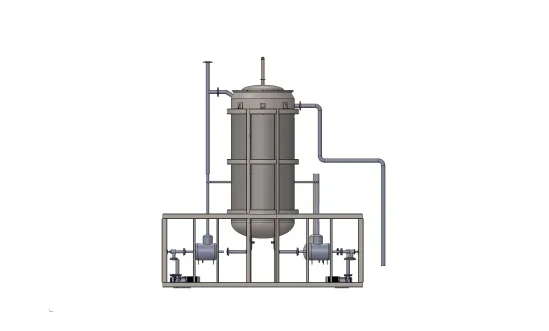From automotive parts to electronics, the finish of metal items plays a major role in their success. One of the key processes to achieve these finishes is electroplating, a technique that deposits a layer of metal on a surface through the use of an electric current. At the heart of the process is the plating tank, which plays a vital role in controlling the plating environment and ensuring the quality of the final product.
In this blog, we’ll explore how electroplating tanks help achieve high-quality metal finishes, breaking down the various factors that influence their effectiveness and the role they play in creating uniform, durable and aesthetically pleasing metal coatings.
What is Electroplating and Why is It Important?
Electroplating is the process of applying a metal coating onto a substrate, often for purposes such as corrosion resistance, aesthetic improvement, or to reduce friction. The process involves the use of an electroplating tank, a container filled with an electrolyte solution, where an electric current is passed through to cause metal ions to migrate and bond to the surface of the workpiece.
The primary metals used for electroplating include gold, silver, nickel, chrome, zinc, and copper. Depending on the application, each metal provides different benefits, such as enhanced corrosion resistance (nickel, chrome), improved conductivity (gold, silver), or aesthetic appeal (gold, chrome).
For industries such as automotive manufacturing, electronics, and jewelry, the electroplated finish is not just about visual appeal—it often determines the performance and longevity of the final product. As such, maintaining the highest standards in the electroplating process is essential, and electroplating tanks play a crucial role in this.

The Role of Electroplating Tanks in the Metal Finishing Process
Electroplating tanks are fundamental to the electroplating process. They hold the electrolyte solution that facilitates the plating, ensuring that the proper environment is maintained throughout the plating process. Let’s explore how these tanks contribute to high-quality metal finishes by examining some of the key factors they influence.
1. Solution Composition and Temperature Control
The composition of the electrolyte solution in the electroplating tank directly affects the quality of the electroplated coating. Different metals require different chemical compositions in their electrolyte baths, including the type of metal salts, acid concentration, and pH levels.
For example:
Nickel electroplating often requires a nickel sulfate solution with added boric acid to maintain a stable pH level.
Chrome plating uses a chromic acid solution, which must be carefully controlled to avoid unwanted side effects like poor adhesion or irregular plating.
The temperature of the electrolyte bath also plays a significant role in the electroplating process. Maintaining an optimal temperature ensures that the metal ions are properly reduced and deposited onto the substrate, contributing to an even and high-quality finish. Excessive heat can lead to burning or rough finishes, while low temperatures can result in poor metal deposition.
Electroplating tanks are equipped with heating systems and temperature sensors to help regulate the temperature and ensure it remains constant during the electroplating process. This consistency is vital in achieving a uniform coating with the desired properties.
2. Uniform Metal Deposition
One of the critical factors in ensuring a high-quality electroplated finish is the uniformity of the metal deposition. The electroplating tank plays a direct role in this by ensuring that the electrolyte solution is evenly distributed and that the electric current is applied uniformly to the workpieces.
To achieve even plating, the electroplating tank is designed with features such as:
Agitation systems that maintain the uniform circulation of the electrolyte solution, preventing the build-up of stagnant areas where plating could be inconsistent.
Anode and cathode placement within the tank, which must be carefully arranged to ensure that the electric current is uniformly distributed across the surface of the workpiece. Inconsistent current flow can lead to uneven metal deposition, resulting in defects such as rough spots, bubbles, or unwanted textures.
Electroplating tanks with optimal agitation and electrical current distribution systems ensure that each workpiece is plated with consistent thickness and uniformity, regardless of its shape or size.
3. Plating Thickness Control
The thickness of the electroplated layer is a critical factor in determining the performance and quality of the finished product. Different applications require different thicknesses of plating. For example, automotive parts may need a thicker coating to provide enhanced wear resistance, while jewelry may require a thinner, more delicate coating to enhance its appearance without compromising flexibility.
Electroplating tanks help control the thickness of the plating by regulating the current density and the time the workpiece spends in the electrolyte solution. These factors determine how much metal will be deposited on the substrate and at what rate.
Current density refers to the amount of current applied per unit area of the substrate, which influences the plating speed and thickness. Higher current densities can lead to faster plating but may result in rougher finishes.
Plating time also plays a role in determining the final thickness of the coating. By controlling the time a part is immersed in the tank, operators can ensure that the plating is applied to the desired depth without over-plating.
Modern electroplating tanks are equipped with automated systems to adjust both current density and plating time, allowing for precise control over plating thickness, ensuring consistency and uniformity throughout the production process.
4. Removal of Impurities and Contaminants
A major challenge in the electroplating process is the presence of impurities and contaminants in the electrolyte solution, which can affect the quality of the plating. These impurities can result from the breakdown of the metal salts, the inclusion of foreign particles, or even the natural contaminants from the air.
Electroplating tanks are equipped with filtration and purification systems that continuously remove these impurities from the electrolyte solution. This ensures that the plating process remains clean and free from defects caused by contaminants, such as pinholes, scratches, or color inconsistencies.
Moreover, regular cleaning and maintenance of electroplating tanks help to extend the lifespan of the electrolyte solution and keep the plating process efficient. By maintaining a high level of purity in the tank, manufacturers can ensure consistent and high-quality plating results.
5. Preventing Over-Plating and Undeclared Deposits
In some cases, electroplating tanks are designed to prevent issues like over-plating or undeclared deposits. Over-plating occurs when an excessive amount of metal is deposited on the workpiece, which can lead to defects, changes in dimensions, or even difficulties in subsequent processing steps.
The anode-cathode ratio, current control, and bath additives can all be adjusted within the electroplating tank to help prevent over-plating. This control ensures that only the required amount of metal is deposited onto the surface, which is essential in producing precise and high-quality finishes.
Additionally, pulsed plating techniques can be employed in the electroplating tank to create smooth, uniform layers without excessive buildup, which can be particularly useful for applications requiring thin and uniform coatings.

Benefits of Electroplating Tanks in Metal Finishing
Now that we’ve explored the different ways electroplating tanks contribute to the metal finishing process, let’s take a closer look at the key benefits of using high-quality electroplating tanks:
1. Enhanced Durability of Finished Products
Electroplated coatings applied with the help of an efficient electroplating tank offer long-lasting protection against wear, corrosion, and environmental damage. This is particularly important in industries like automotive manufacturing, where parts must endure harsh conditions.
2. Aesthetic Improvements
In industries like jewelry manufacturing, electroplating tanks ensure the production of visually appealing finishes. The ability to produce smooth, shiny, and uniform coatings enhances the appearance of metal objects, making them more attractive to consumers.
3. Improved Performance and Functionality
Electroplated finishes can improve the functional properties of metal objects, such as conductivity, friction resistance, and wear resistance. Electroplating tanks contribute to the precision required to achieve these enhanced characteristics, which are crucial in high-performance applications.
4. Cost-Effectiveness
By ensuring uniform coating and consistent quality, electroplating tanks help reduce material wastage and improve production efficiency, leading to cost savings in both time and resources.

Conclusion
The electroplating tank plays a central role in achieving high-quality metal finishes, contributing to the production of durable, functional, and aesthetically pleasing metal products. From regulating the electrolyte composition and temperature to ensuring uniform metal deposition and removing contaminants, these tanks are integral to the overall electroplating process.



